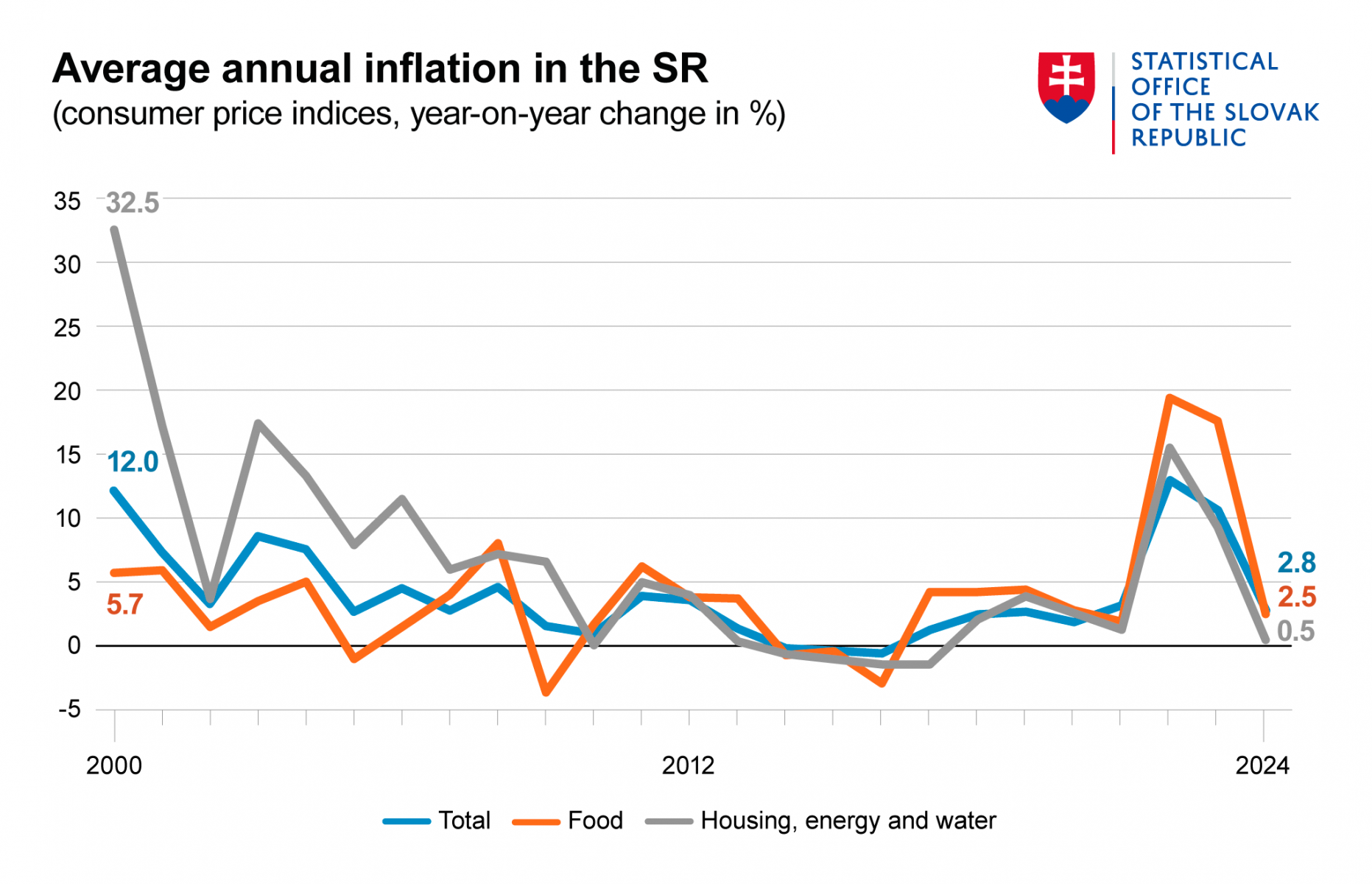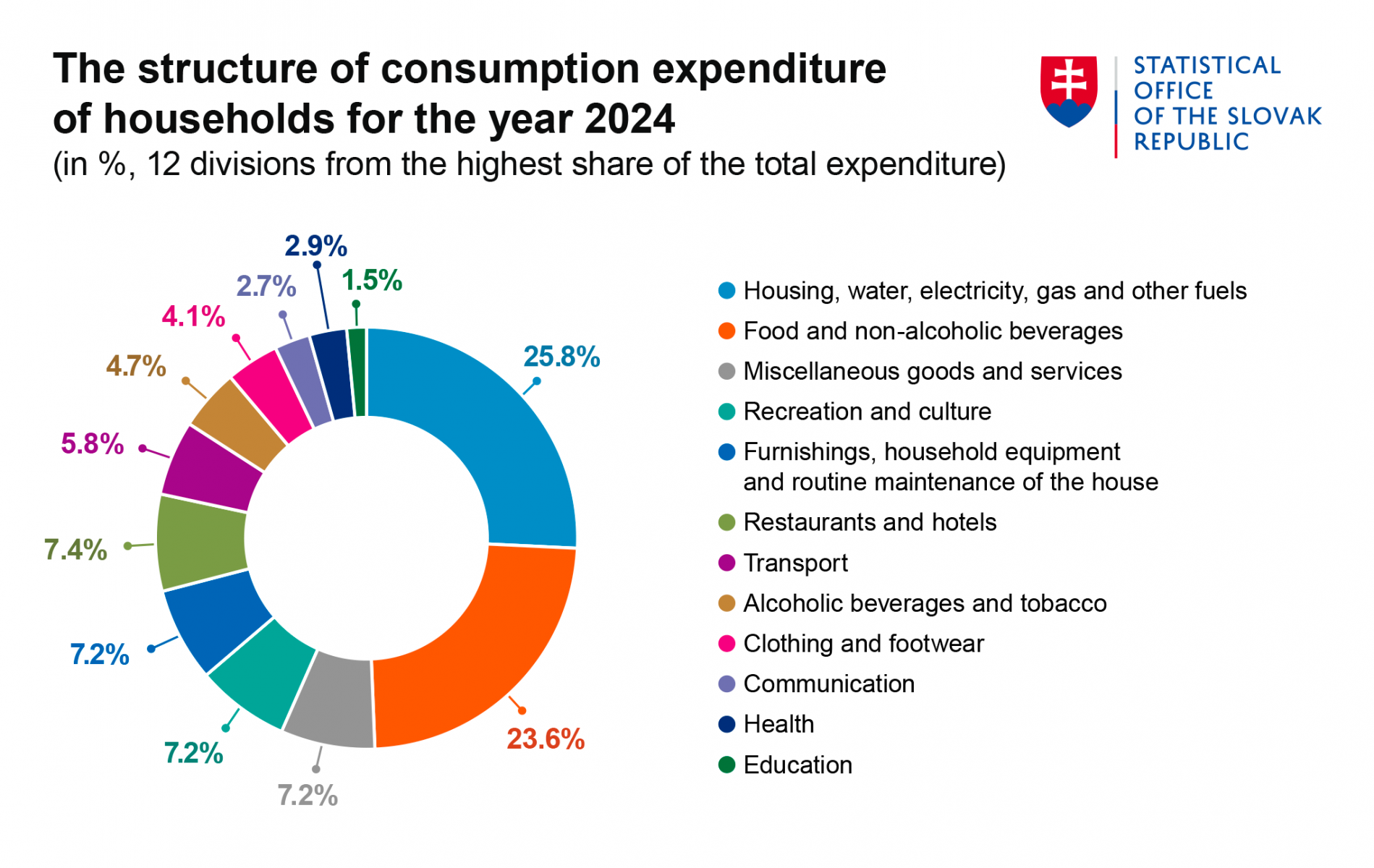Inflation in Slovakia drops to 2.8% in 2024, marking steepest decline in 25 Years
Inflation in Slovakia fell to an average of 2.8% in 2024, achieving the most significant year-on-year slowdown in the past 25 years. This marked a sharp decline from the double-digit inflation rates experienced in 2022 and 2023, which stood at 12.8% and 10.5%, respectively. The moderation in price growth was primarily driven by a slowdown in food price increases and minimal hikes in housing and energy costs, according to data released by the Statistical Office of the Slovak Republic.
Throughout 2024, the rise in consumer prices was predominantly influenced by food, though its annual increase did not exceed 3%, a stark contrast to the over 17% surge recorded in 2023. Meanwhile, housing and energy costs rose marginally by just 0.5%, compared to the more than 9% increase seen the previous year. Despite this overall easing, price hikes were noted in various service sectors, such as transport, hospitality, and alcoholic beverages with tobacco products.
The deceleration in inflation was consistent throughout the year, with monthly price increases staying below 4%. The Statistical Office plans to release a separate report detailing inflation trends for December 2024.
Key Drivers of Inflation in 2024
In 2024, inflationary pressures were felt across all 12 divisions of the consumer basket, though only the education sector recorded double-digit price growth of 10.5%. Other notable increases were seen in healthcare, alcoholic beverages, tobacco, and food service activities, where prices rose by more than 5%. The steepest year-on-year decline in price growth occurred in food and non-alcoholic beverages, which increased by an average of 2.5% in 2024, compared to 17.3% the previous year. Housing and energy, which make up nearly half of household expenditures in Slovakia, saw only minimal price changes.
Food remained the most significant contributor to inflation, with prices rising by 2.5% year-on-year. Increases were particularly evident in staple categories such as bread and cereals (+4%), vegetables and fruits (both over 3%), and oils and fats (+9%). On the other hand, dairy products such as milk, cheese, and eggs saw a slight price drop of 0.2%. Importantly, food price increases were substantially lower than those recorded in 2023, when some categories saw hikes of 15% to 23%.
Housing and energy prices had a dampening effect on inflation, increasing by only 0.5%. Components such as imputed rent fell by 0.8%, while solid fuel prices dropped by nearly 5%. Electricity and gas prices for households remained mostly unchanged from 2023 levels. However, price increases were recorded in waste collection fees (+15%) and other housing-related costs, such as rent and maintenance charges.
The hospitality sector also contributed to inflation, with restaurant and hotel prices rising by over 5%, driven largely by a 7.1% increase in restaurant and café prices. Alcoholic beverages and tobacco prices also rose due to adjustments in excise duties, resulting in increases of nearly 9% for spirits and 9.1% for tobacco products.
Sectoral Trends in 2024
In transportation, prices increased by 3.2%, making it the only sector where the inflation rate accelerated compared to 2023. The rise was driven primarily by a 16.5% jump in passenger transport fares, although fuel prices declined by 1.7% year-on-year.
Meanwhile, the education sector recorded the highest price growth at 10.5%, attributed to fee hikes across all levels of study, though its impact on overall inflation was limited due to its small share in household expenditures.
Outlook for Core and Net Inflation
Core and net inflation, which exclude volatile elements such as regulated prices and food costs, both stood at 2.6% for the year. Core inflation reflects the underlying price trend by excluding administrative measures such as tax changes, while net inflation provides a clearer picture of inflationary pressures by further excluding food prices.
The inflation slowdown in 2024 provides a more stable economic outlook for Slovakia, signaling the end of a period of rapid price increases and offering relief to households facing rising living costs in previous years.
Source: Statistical Office of the Slovak Republic










